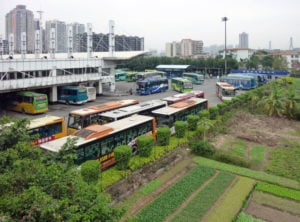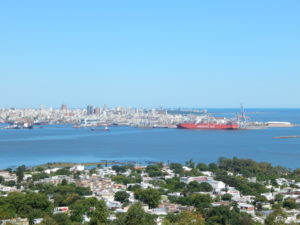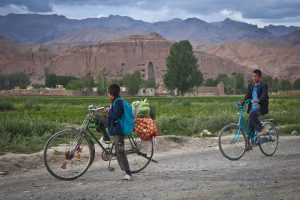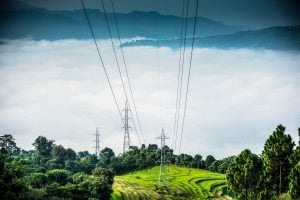Bangladesh is formed by silt that is carried down by three major rivers – the Brahmaputra-Jamuna, the Ganga and the Meghna – and their tributaries. Together, they have formed one of the world’s largest deltas. This process is now threatened by construction of dams upstream, in Bhutan, China, India and Nepal. The trapping of the silt behind dam walls is a major threat to farmers, but a big boon to navigation.
The 57 transboundary rivers that flow through Bangladesh before reaching the sea carry a huge volume of silt, which replenishes the soil every year and is key to its fertility. As the rivers flood and erode land along one bank, they deposit silt on the other. For centuries, farmers in the delta have learnt to profit from this.
But in recent decades, the floodwaters have been carrying sand rather than silt, leaving behind barren soil and accelerating erosion throughout the year. “Irregular sedimentation accelerates riverbank erosion,” points out Ainun Nishat, the doyen of water experts in Bangladesh.
Since the dams that hold back the silt are being built or planned in other countries, Bangladesh cannot handle the situation on its own. It needs to convince upstream countries to cooperate more closely on integrated management of common river basins.
“When floods take place in the country, silt falls on agricultural lands and enhances soil fertility. Clay carried by floodwater also plays an important role in building fertile land,” Maminul Haque Sarker, the deputy executive director of Dhaka-based think tank Centre for Environmental and Geographic Information Services (CEGIS), told thethirdpole.net.
According to a 2018 study, two of the three seasonal rice varieties (aus and aman) grown in Bangladesh cannot survive without floodwater.
Siltation
The Ganga-Brahmaputra-Meghna (GBM) river system carries around 1.2 billion tonnes of silt a year and the sediment is being deposited in riverbeds or the Bay of Bengal, said Sarker, citing the findings of a CEGIS study. The river system started forming the Bengal Delta around 10,000 years ago and since then, people have been practising agriculture on this land. “At that time, the sea level was 60 metres below the current level,” he added.
Ainun Nishat added that the Bengal Delta was formed in the last 5,000-10,000 years through the siltation process, which formed many islands, and some of them later merged. While most of the large deltas in the world are eroding because of the lack of sediment from upstream, the Bengal delta is still growing, he added.
Why is silt a problem?
Silt is a blessing for farmers needing fresh soil, but a curse for navigation along the rivers. It also means that riverbeds rise with silt and the rivers flood more easily after heavy rainfall or if a lot of water is released from dams upstream.
“If siltation occurs, the conveyance [carrying capacity] of a river dwindles and that is why there will be overflow of water, resulting in flood. And the frequency and intensity of the floods increase,” said Mir Mostafa Kamal, a director of the river engineering division at the Institute of Water Modelling (IWM).
He said an increase of sedimentation changes the behaviour and ecology of the river, affecting the lives and livelihoods of local people.
Each year, Bangladesh spends a huge amount of money dredging its main rivers to ensure navigability.
On October 23, 2018, the executive committee of the National Economic Council of the Bangladesh government approved a BDT 44.89 billion (USD 535 million) project to procure 35 dredgers to keep up the navigability in 100 major rivers across the country.
“If dredging can be carried out in major rivers, the navigability of all rivers will increase. But this dredging should be done in a planned way,” Nishat said.
Sarker said, if necessary, dredging must be conducted considering the present status of the rivers aiming to ensure their navigability, but it would not be a solution for all rivers. “If you do so, it will not work.”
The Bangladesh Delta Plan 2100 points out that from the 1970s to the 1990s, the GBM river system has undergone changes. The Brahmaputra – locally called Jamuna – widened by three to four kilometres with severe riverbank erosion. The annual average erosion was 5,000 hectares in the 1980s. It has declined to 2,000 hectares per year in the recent past. About 100,000 hectares were lost from the 1970s to the end of the last century, forcing millions of people from their homes.
A hope of new land
Most of the 1.2 billion tonnes of sediment carried by the GBM river system every year is deposited in the estuary. As a result, a vast area of land is emerging along the shores of the Bay of Bengal. This is clearly visible even to a casual observer at Nijhum Dweep, one of a cluster of small islands in Noakhali district, where land is forming due to siltation in the Meghna estuary.
Bangladesh has so far reclaimed over 1,000 square kilometres of land from the sea south of Noakhali.
As sediment is being deposited, it is quite possible to reclaim more land from both the coastal area of the country and its rivers by constructing cross-dams, Nishat said.
The Bangladesh Water Development Board (BWDB) has already revealed the outline of a mega project to use silt deposits to reclaim 1,600 square kilometres of land from the Jamuna and Padma rivers within 25 years.
The proposed project aims to reclaim 55 square kilometres in Sirajganj district and another 47 square kilometres in Jamalpur.
The growth in sand mining
The growth in sand mining from riverbeds could seriously harm this process. The sand is used in the construction industry and illegal extraction, carried out with the support of local politicians, is a problem across the Ganga Brahmaputra Meghna delta. And when sand is mined, the silt is lost along with it. In 2017, the Bangladesh government decided to export sand mined from riverbeds after two Singaporean companies showed interest in importing sand from Bangladesh, but it later suspended the decision.
![<p>Silt has built up the land in Bangladesh, but upstream dams now limit the silt that comes in, and the silt that is there, hampers river navigation and leads to flooding [image by: Masul Al Mamun]</p>](https://dialogue.earth/content/uploads/2019/01/DPP_0009.jpg)








